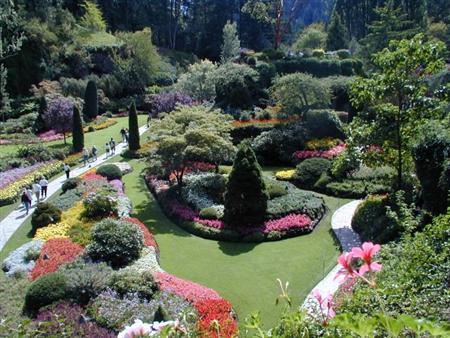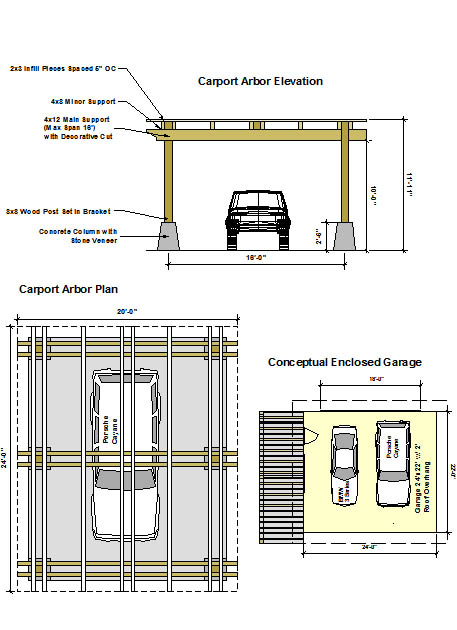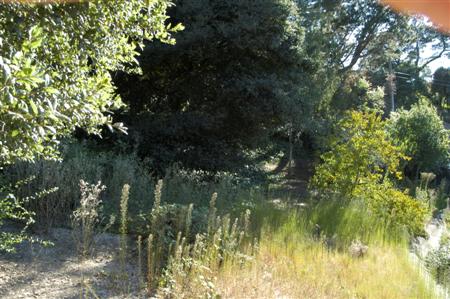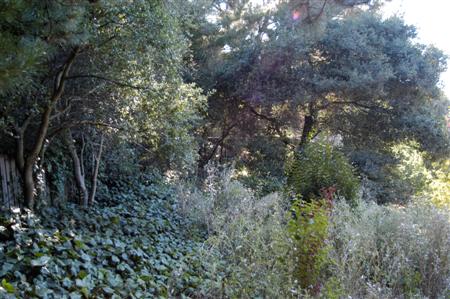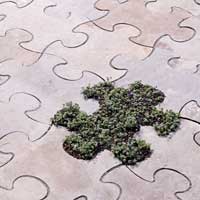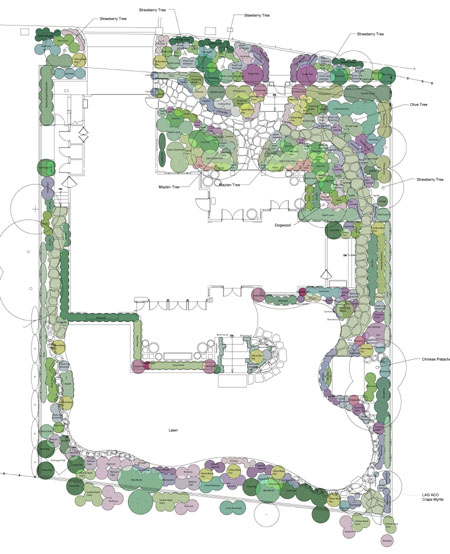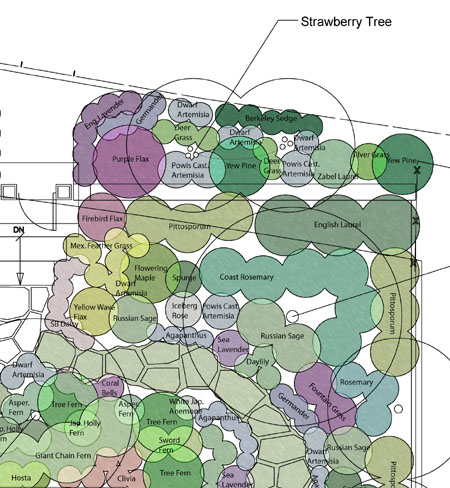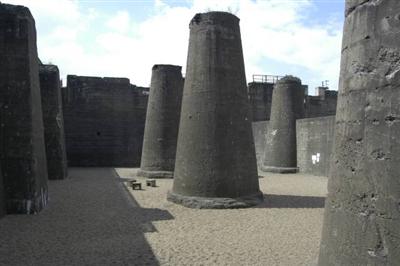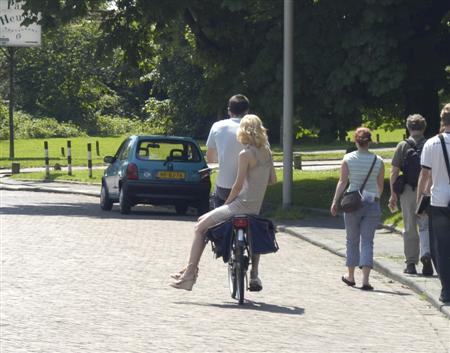After talking with a prospective client recently, an issue came up that can frequently be confusing when installing a new landscape- how much is it going to cost?
There is no easy way to answer the question, or any absolute formula or cost per square foot to apply that can give a perfect idea of cost. Yet, landscaping is a big ticket item, similar to buying a car; you wouldn’t go to the dealership not knowing if you wanted a Honda Civic or a Porsche.
Landscaping is often not too different in terms of time required, labor required, and material cost required, than some remodeling projects done in the home. You can spend easily $10-20,000 remodeling a 150 square foot bathroom; a 5000 square foot yard done with similar eye for detail is not going to be in that price range.
With that in mind, here is a simplified overview of costing, to give a general idea of what landscape projects cost.
Cost for a project is related to a variety of factors:
1- Site work: How much grading, clean-up, tear out work is involved. How hard is it to access the site and do the work. Can a Bobcat be brought in or does everything have to be done by hand?
2- Infrastructure: How much work is needed on the underlying systems- drainage, electrical, irrigation, lighting. Are there spaces that need to be created with large retaining walls that require drainage and a lot of site work?
3- Hardscape: Usually the most expensive aspect of the project. What are the sizes and lengths of retaining walls required (typical cost $100-400+ per foot), what are the sizes and finishes of patios (concrete, brick, stone?), walkways and flatwork (typical cost $10-40 per square foot). Are there arbors, fences, or gates required?
4- Softscape: How much planting, soil prep and mulching needs to be done? Are plants going to be installed small and allowed to grow, or brought in already mature (e.g. Box Trees)?
5- Accessory features: Are lighting, water features, firepits, or outdoor kitchens desired? What is the scale and level of detail of these items (Are you looking for the Trevi fountain in Rome or a pre-cast fountain that will fit by the back door?).
When Setting a Budget keep the following in mind:
1. Decide what benefits you are going to receive from the new landscaping.
2. Ask friends and neighbors what they spent for their landscape projects.
3. Determine if there is going to be phasing of the project and think about the total scope, detail and cost of the items associated with the project.
From a general perspective most projects that we do in Marin would probably fall into the following categories (all projects pictured are in the upper half of their respective categories):
Small Landscape: $20,000-40,000
These projects that are either on small lots if landscaping both a front or back yard, or focus on a particular area such as just the front or back yard. The design is articulated, but there are not a lot of detail items and accessory features. If those features are present they are typically of smaller scale. If projects are more articulated at this scale it is typically because there was less site work, excavation/retaining, and infrastructure work needed.



Small project above included: Irrigation system, small 150 sq.ft. flagstone patio set in sand, border accent plants, back concrete patio with stone accents, seat wall and waterfall. A project at the bottom half of this category would probably have about half of these elements.
Medium Landscape: $40,000-75,000
Typically larger lots or smaller lots/areas with more detail. There may still only be a focus on a particular part of the lot or a front or back yard. Medium sized projects tend to have more detailing of elements (e.g. Flagstone patios instead of concrete, stone walls instead of concrete stacking blocks)

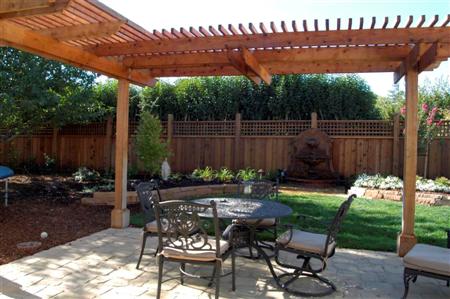

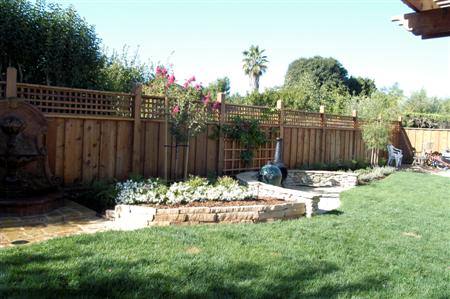
Medium project above included: Back yard only- Irrigation and drainage systems, flagstone patio, lawn (700 sq.ft.) flagstone barbecue area and seat wall, perimeter fencing for back yard, accent arbor, lighting package, small concrete utility area, and linking flagstone pathway.
Large Landscape: $75,000-$150,000
Large landscapes are usually distinguished by more detail work and accessory features of a large overall scale, usually the whole lot. Larger scale grading and infrastructure work is usually required.

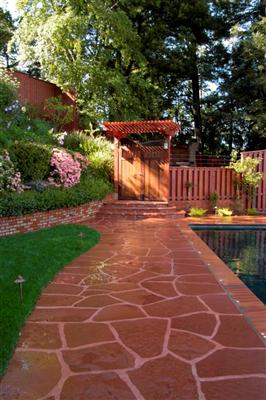
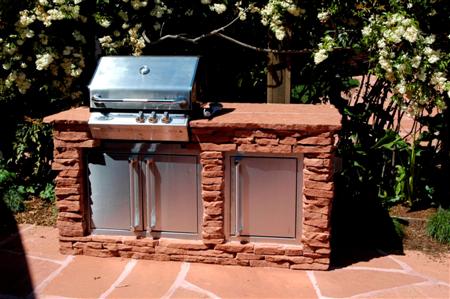
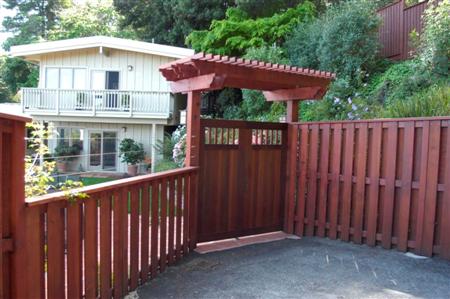
Large project above included: Irrigation and drainage systems, large flagstone patio (1000 sq.ft.), large deck retrofit, water feature, barbecue island, perimeter fencing and deck railing, entrance arbor, lighting package, front entrance gate and pillars, and linking flagstone pathway.
Custom Landscape: 150,000 and up
These custom projects are just that, custom. They tend to have a lot of handcrafted detail and more expensive materials. They also typically incorporate more elements, on a larger scale than the project cost categories above. Large scale retaining walls and grading are often required. Plantings typically are installed with larger container sizes and box trees (the cost of large box trees can equal a small scale project).
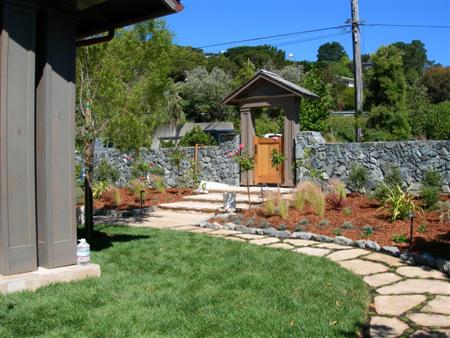
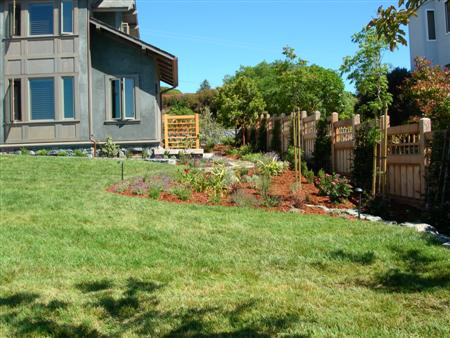
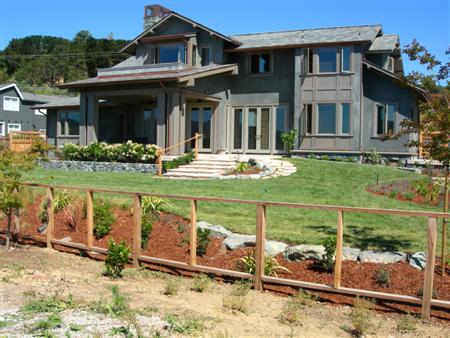
Custom project above included: Extensive retaining walls and engineered patio area, decorative stone veneer walls throughout, linking flagstone pathways for front and back yard, custom cedar fencing, gates and trellises, large stone patios, large lawn areas, several large box trees, drainage, irrigation and lighting systems, and well articulated planting beds.



